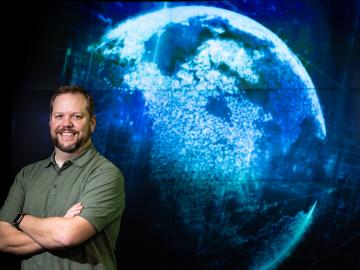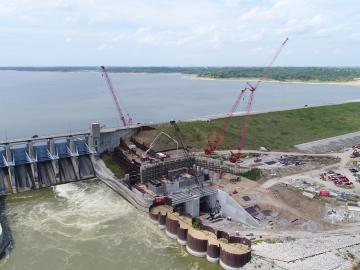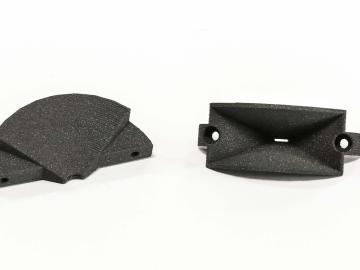
Filter News
Area of Research
- Advanced Manufacturing (9)
- Biology and Environment (4)
- Building Technologies (1)
- Computer Science (3)
- Electricity and Smart Grid (1)
- Energy Science (52)
- Fusion and Fission (3)
- Materials (10)
- Materials for Computing (6)
- National Security (2)
- Neutron Science (6)
- Quantum information Science (3)
- Sensors and Controls (1)
- Supercomputing (9)
- Transportation Systems (1)
News Type
News Topics
- (-) 3-D Printing/Advanced Manufacturing (29)
- (-) Big Data (6)
- (-) Energy Storage (22)
- (-) Grid (12)
- (-) Quantum Science (14)
- (-) Transportation (26)
- Advanced Reactors (3)
- Artificial Intelligence (9)
- Bioenergy (17)
- Biology (26)
- Biomedical (15)
- Biotechnology (5)
- Buildings (10)
- Chemical Sciences (7)
- Clean Water (9)
- Composites (9)
- Computer Science (48)
- Coronavirus (9)
- Critical Materials (5)
- Cybersecurity (10)
- Environment (44)
- Exascale Computing (3)
- Frontier (4)
- Fusion (11)
- High-Performance Computing (19)
- Isotopes (18)
- ITER (4)
- Machine Learning (1)
- Materials (31)
- Materials Science (28)
- Mathematics (1)
- Mercury (5)
- Microscopy (14)
- Molten Salt (4)
- Nanotechnology (16)
- National Security (7)
- Neutron Science (29)
- Nuclear Energy (13)
- Physics (10)
- Polymers (9)
- Quantum Computing (5)
- Security (9)
- Space Exploration (6)
- Statistics (1)
- Summit (11)
Media Contacts

A method developed at Oak Ridge National Laboratory to print high-fidelity, passive sensors for energy applications can reduce the cost of monitoring critical power grid assets.

Twenty-seven ORNL researchers Zoomed into 11 middle schools across Tennessee during the annual Engineers Week in February. East Tennessee schools throughout Oak Ridge and Roane, Sevier, Blount and Loudon counties participated, with three West Tennessee schools joining in.

Cory Stuart of ORNL applies his expertise as a systems engineer to ensure the secure and timely transfer of millions of measurements of Earth’s atmosphere, fueling science around the world.

To better understand the spread of SARS-CoV-2, the virus that causes COVID-19, Oak Ridge National Laboratory researchers have harnessed the power of supercomputers to accurately model the spike protein that binds the novel coronavirus to a human cell receptor.

Oak Ridge National Laboratory researchers have demonstrated that a new class of superalloys made of cobalt and nickel remains crack-free and defect-resistant in extreme heat, making them conducive for use in metal-based 3D printing applications.

Three technologies developed by ORNL researchers have won National Technology Transfer Awards from the Federal Laboratory Consortium. One of the awards went to a team that adapted melt-blowing capabilities at DOE’s Carbon Fiber Technology Facility to enable the production of filter material for N95 masks in the fight against COVID-19.

Energy storage startup SPARKZ Inc. has exclusively licensed a battery cycling technology from ORNL designed to enable the rapid production of lithium-ion batteries commonly used in portable electronic devices and electric vehicles.

Collaborators at Oak Ridge National Laboratory and the University of Tennessee Health Science Center are developing a breath-sampling whistle that could make COVID-19 screening easy to do at home.

A new Department of Energy report produced by Oak Ridge National Laboratory details national and international trends in hydropower, including the role waterpower plays in enhancing the flexibility and resilience of the power grid.

The ExOne Company, the global leader in industrial sand and metal 3D printers using binder jetting technology, announced it has reached a commercial license agreement with Oak Ridge National Laboratory to 3D print parts in aluminum-infiltrated boron carbide.


